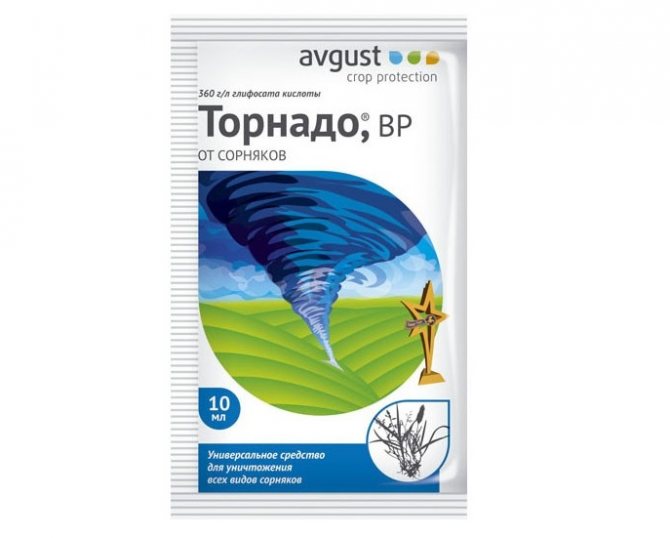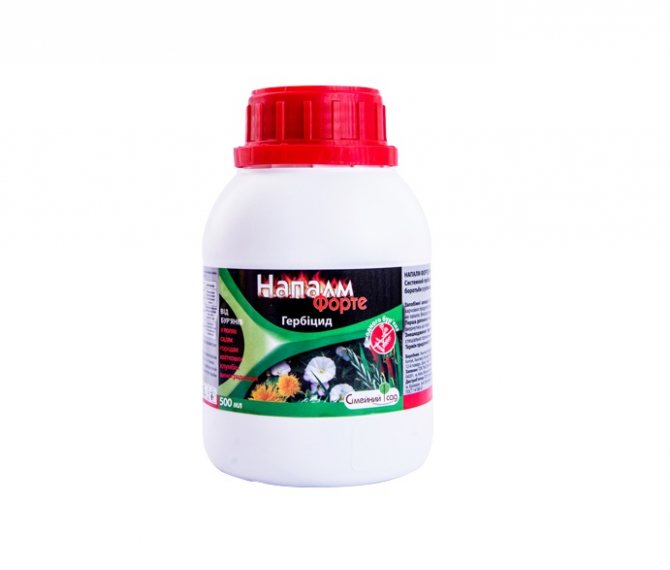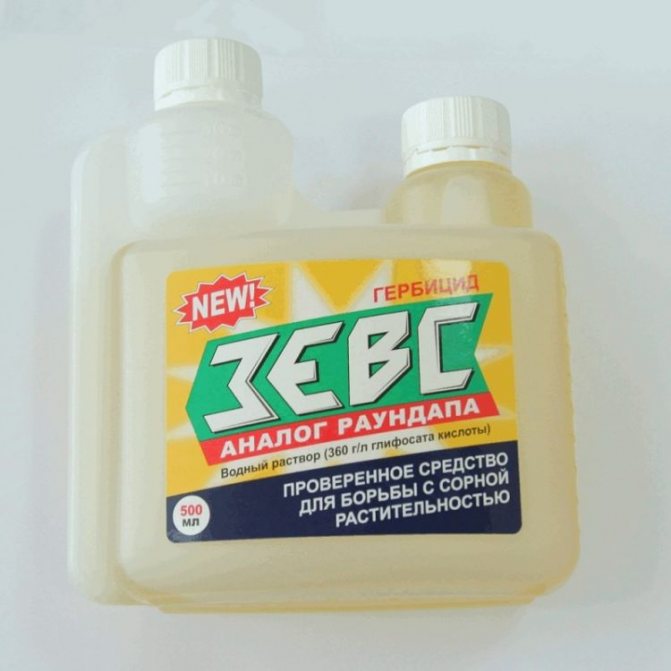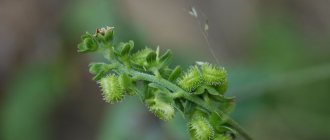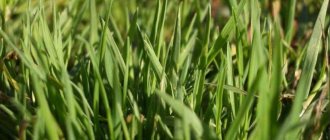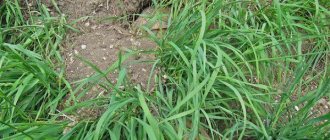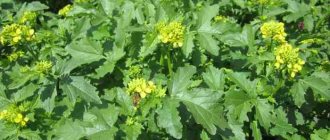Weeds are the scourge of the gardener, gardener. Fighting this type of grass is tiring. But the most annoying thing is that harmful plants do not allow vegetable crops to develop well enough. The reason: they take the necessary micro and macro elements from the soil, not leaving the garden plants to gain vital energy.
Roundup herbicide is a specially designed product that will help eliminate the garden problem. The tool is effective and proven by most summer residents, professionals in breeding. Has earned recognition, as evidenced by the positive reviews.
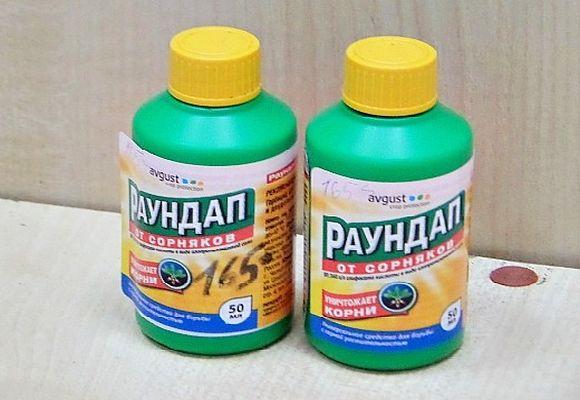
Composition and form of release of "Roundup"
Roundup weed poison is an organophosphorus compound. It consists of:
- glyphosate - active substance - 360 g / l;
- surfactant - 180 g / l.
There are other varieties of weed poison that can be purchased in Russian stores:
- Roundup Max - 450 g / l;
- Roundup Extra - 540 g / l.
The herbicide, as noted in the instructions, is a yellowish liquid with almost no odor. It dissolves quickly when it gets into water.
The herbicide is packed in plastic containers (ampoules, vials, cans) of various sizes, so summer residents have a choice. For a small area, 5, 50, 100, 200, 500 or 1000 ml are enough. To destroy weeds on farmland, you need to use the agent in cans with a capacity of 5, 10, 25 liters according to the instructions.
Special spray bottles are available at the time of purchase for small area weed control.
Cost and analogues
The herbicide can be purchased at specialty stores or garden centers. On average, the price for a 100 ml bottle varies from 170 to 250 rubles.
Roundup's glyphosate is also found in other herbicidal products. Similar agricultural means for weed control are:
- Tornado;
- Liquidator;
- Hurricane;
- Zeus;
- Chord;
- Napalm.
These drugs differ from each other in the concentration and dosage of the active substance.
How Roundup works on weeds
Roundup is a broad-spectrum herbicide, which means that not only weeds, but also cultivated plants die after treatment. Therefore, it is necessary to use the agent in such a way that drops of the drug do not fall on garden crops, this is also said in the instructions. It is best to cover them with a material that does not allow water to pass through.
The main active ingredient of the Roundup herbicide is glyphosate. After 6 hours, it affects the green mass of weeds, sticking to the leaves thanks to a special substance. Then it gradually penetrates into plant cells, where it reduces photosynthesis, and then into the roots. As a result, amino acids cease to form, and the weeds die.
After treating weeds with Roundup, it is not immediately clear whether glyphosate works or not. But according to the instructions, a massive yellowing of the grass begins within five days. The weeds dry up. After 2-3 weeks, unnecessary vegetation on the site disappears.
Advantages of the drug
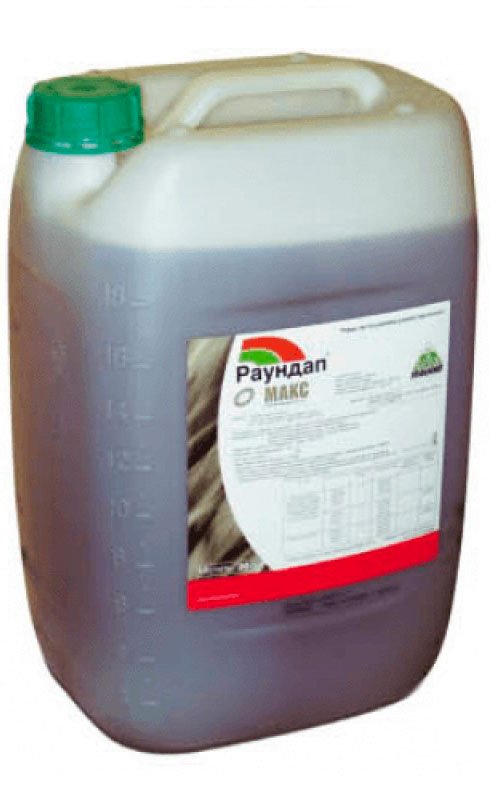

Roundup has undeniable advantages over many other herbicides.
The advantages of the drug include:
- High efficiency against a wide range of weeds.
- No negative impact on the soil.Substances of the preparation do not harm the fertility of the soil and quickly decompose, therefore, after the death of weeds, cultivated plants can be planted on the site.
- Fast action and the possibility of one-time processing.
- Preservation of the protective effect for 2-3 months.
Advantages and disadvantages of Roundup
Before using on the Roundup site for weed control, you need to familiarize yourself with the positive and negative properties of the herbicide, as well as the instructions.
Advantages:
- The drug is safe for the environment, but only if used in accordance with the instructions.
- It affects weeds relatively quickly, some time after application, you can sow seeds of cultivated plants or plant seedlings.
- The versatility of the impact, since perennial, biennial and annual weeds disappear from the site. Moreover, they are completely affected, since after the penetration of the substance inside, the root system dies. Unnecessary weeds, clogging up the area, disappear for a long time.
- It is easy to apply the herbicide.
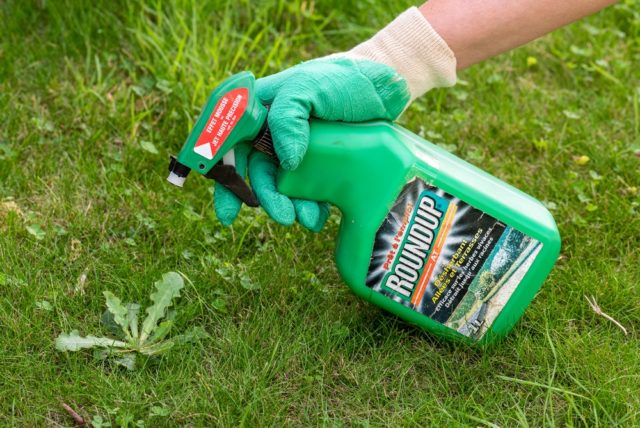

In addition to its advantages, the Roundup weed herbicide, unfortunately, has disadvantages that you should pay attention to:
- The seeds in the ground remain unharmed, since the substances contained in the preparation have no effect on them. Therefore, after some time, it will be necessary to remove weeds on the site that multiply by seeds.
- Roundup against weeds is a product of American chemists. Unfortunately, fakes are often found in Russian stores.
- Some studies show that the product is not as safe for the environment, as Roundup is still toxic, like any other herbicide.
- In the European Union, the attitude towards the drug for the destruction of unnecessary herbs is negative, since not all substances that make up the product are completely decomposed. It is not recommended to use it.
- The disadvantage is also the high price.
A warning! Toxic drugs must be used in accordance with the instructions.
What can be done to kill weeds other than using herbicides
But what to do if in some cases even Roundup is not very effective? Experienced gardeners say that relying solely on herbicides in such matters is foolish, and therefore the approach to weed control must necessarily be comprehensive:
Firstly, it is important to dig the beds well to a depth of at least a shovel bayonet. In addition, it is strongly recommended to make fences around their perimeter from the same slate, and it is advisable to deepen them into the ground by at least 50 centimeters. Tomatoes, peppers and all other crops that are planted as seedlings should be planted on as high, loose ridges as possible, which make it easier to weed and remove weed roots from the soil. It is very advisable to close the aisles with dense mulch, and in its absence, use old linoleum, film or other synthetic material that does not lend itself to decay. Never forget about prevention, do not forget about the destruction of newly emerged weeds
As soon as on the ridges, in addition to cultivated plants, something superfluous appears, immediately arm yourself with a hoe and remove the "settlers" at the root.


Instructions for use of the drug "Roundup"
To use the Roundup weed killer with a capacity of 5 ml, you need to carefully read the instructions for use. It clearly describes the processing times and crops on which the herbicide can be applied, as well as the features of the solution preparation.
Working rules:
- It is necessary to apply "Roundup" when the violent growth of weeds begins.
- It is necessary to spray the grass in dry, calm weather so that the Roundup spray does not get on the cultivated plants.After processing, precipitation should not be within 5-6 hours, otherwise there will be no result.
- It is necessary to use the drug in clothing that protects the body, gloves and a respirator.
- According to the instructions, the dishes in which the solution was prepared cannot be used for storing food.
After processing, it is advisable not to visit the site for 5-6 days. First, it is dangerous for humans, since Roundup is a toxic herbicide. Secondly, during this time, the agent manages to penetrate to the root system and stop the further development of weeds.
When to Apply Roundup Weed Control
Roundup is a universal remedy widely known to gardeners all over the world. It can be used (in accordance with the instructions) at any time when the need arises. The herbicide has no soil activity, since it affects only the green mass.
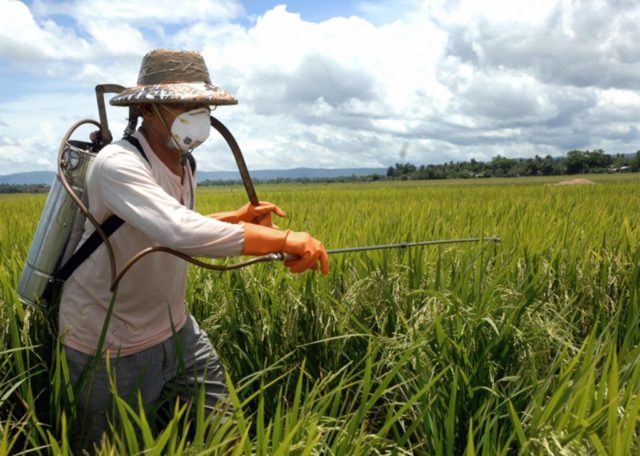

The timing of the destruction of unnecessary vegetation is an individual matter:
- In the spring, it is advisable to use the Roundup herbicide to kill weeds at the beginning of the growth of the weeds, before sowing garden crops. The height of the grass should be at least 5-15 cm. In spring it is easy to destroy annual weeds.
- Summer treatments are possible, but this increases the risk of destruction of cultivated plants if drops of herbicide accidentally fall on them. But if you cannot manually remove perennial grasses, then it is better to resort to using Roundup.
- After the crop is harvested, and only weeds remain on the site, you can reapply the product. In this case, the soil will have time to process toxins, the site will be ready for spring planting.
Important! The air temperature, as stated in the instructions, at which Roundup can be used is from +10 to +26 degrees.
How to breed Roundup from weeds
It is necessary to use an aqueous solution to kill weeds. Dilute Roundup weed remedy strictly according to the instructions:
- You need to take clean water, in which there are no impurities. If it is tough, then the dosage of the drug will have to be increased.
- You can dilute the drug for the destruction of weeds in a plastic or metal container - in a bucket or canister.
- After processing the site, it is better to cover the remaining solution with a lid. It can be applied within a week.
Good to know when using Roundup
If you had a fantasy not to use the land for garden crops on the garden plot, but to sow a lawn, treat the entire land with Roundup as a whole, to the last square centimeter. It is better to do this in early spring, after the snow melts, when more or less warm stable weather sets in with an average daily temperature above zero degrees Celsius. After that, you need to wait at least two weeks, loosen the soil, and then you can add the seeds of the lawn culture. In two weeks, the remains of the herbicide will decompose in the soil.
Any weeds not only take away nutrients from cultivated plants, but also spoil the aesthetic appearance of the plots, especially if the designer was involved in the design. Most of all, this applies to places near buildings or fences, where decorative fences and protective green walls are planted. There, Roundup processing is carried out selectively, and preferably during the summer months.
If the site is excessively populated with weeds of various types - simultaneously with annuals and perennials, with a massive aboveground part (burdock, thistle) and with an extended or branched root system (wheatgrass, horse sorrel), herbicide treatment will not be enough for cultivated plants to be planted later felt comfortable. Especially if the owner of the site has declared war on a dangerous hogweed (or a bunch, as it is called in the eastern regions of our country).
Therefore, after processing, the site should rest, stand empty until the next season.In autumn, winter and spring, the residues of the drug will completely decompose in the soil and it will become safe in terms of growing food.
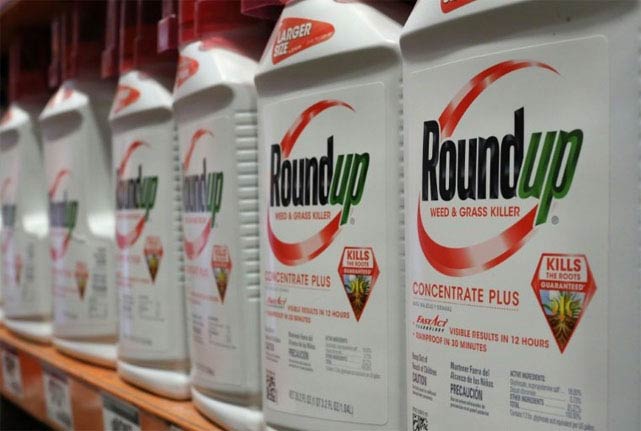

For what crops is it used
Roundup can be used for weed control:
- Cereals and melons, vegetables and potatoes after harvest.
- Perennial grasses 2-3 weeks before sowing.
- Beets and corn 14 days before sowing seeds.
- Soybeans and sunflowers, cabbage 3-5 days before sowing.
- Fruit trees and grapes in spring or summer. Only they need to be protected with a film before starting processing.
The herbicide can be used, according to the instructions, to clean up non-agricultural land. Work can be carried out at any convenient time.
Comment! Special transgenic soybean varieties are resistant to one of Roundup's constituents - glyphosate. This allows the herbicide to be applied directly to the planting at any time.
Preparation of working solution
Before use, Roundup must be diluted with water, observing the proportions recommended by the manufacturer. The concentration of chemistry in the solution should not exceed 3%. A drug content below 1% makes the product ineffective.
The herbicide should be diluted with clean water. The presence of impurities such as clay or silt reduces the effect of the product. Usually the solution is prepared by diluting 0.5 ml of the preparation in ½ l of water.
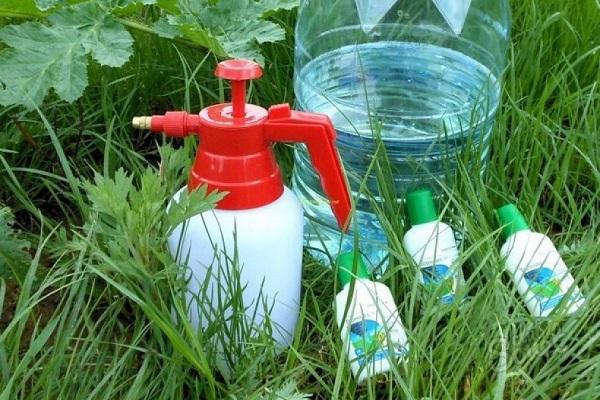

What weeds helps
Roundup is a universal herbicide, which, according to the instructions, can be used from 300 species of annual and perennial weeds.
The herbicide destroys:
- Cereals and dicotyledonous herbs.
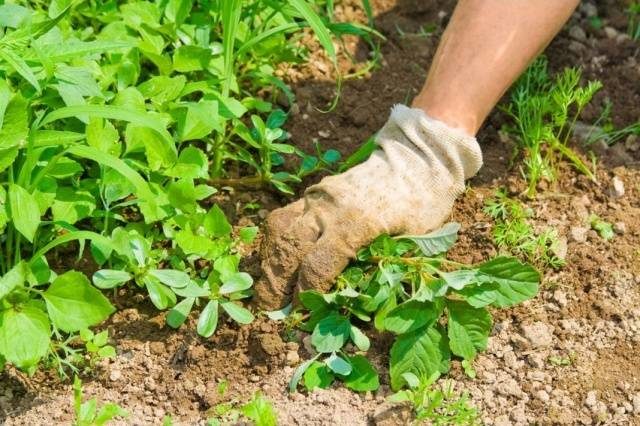

- Hogweed and creeping wheatgrass.


- Sow thistle and horse sorrel.
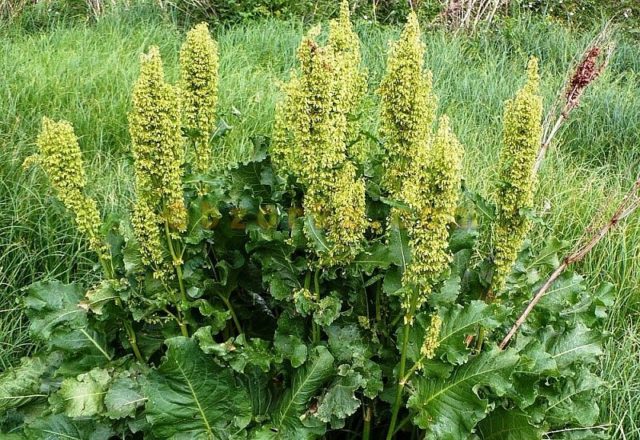

- Nettle and thistle.
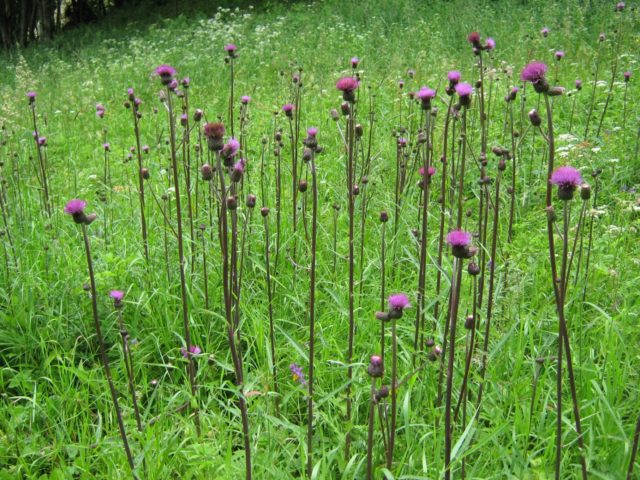

- Dandelions and plantain.
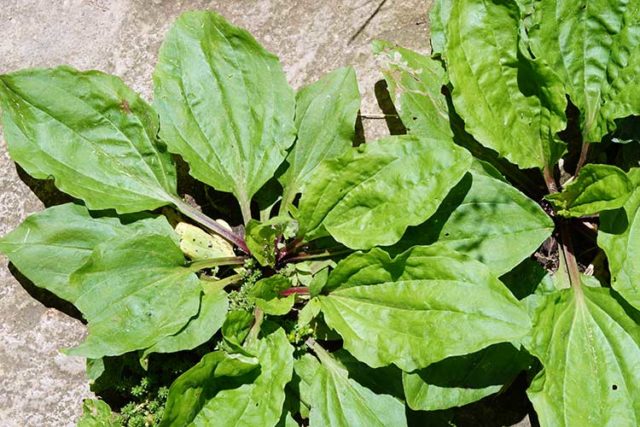

In new summer cottages, there are often thickets of shrubs and unnecessary trees. To remove them, you will need to apply a weed killer throughout the warm season. In this case, the dosage of the drug must be increased.
When is the herbicide used?
You can remove unwanted weeds at any time of the year (not counting winter). The components in the composition do not destroy the soil, but only affect green plants. More often Roundup is used in the summer. But it all depends on the individual task.
What weeds does it help against?
Roundup destroys the roots of harmful weeds, namely:
- sow thistle;
- wood lice;
- thirsty;
- dandelion;
- sorrel (horse);
- buttercups;
- burdocks;
- wheatgrass;
- hogweed;
- wood lice;
- perennial and annual weeds (more than 250 species);
- various shrubs.
Security measures and storage
Since Roundup is a potent herbicide with toxic properties, it must be used with caution. Only with the observance of safety precautions, the health of a person spraying weeds will not be affected. Rules:
- Planting of cultivated plants must be covered with protective screens made of a film that does not allow water to pass through. If "Roundup" still got to the garden plantings, then you need to water them with plenty of water.
- It is forbidden to carry out any work on the treated area during the week.
- The weed-killer should protect the body with thick clothing. Wear rubber gloves on your hands, glasses on your eyes. A respirator or mask can be used to protect the respiratory tract.
- In no case should you smoke, drink or eat during work, as toxic substances will enter the body with air vapor.
- If the product gets inside, you need to drink a lot of water, induce vomiting. Then take a few activated charcoal tablets.
- After work, wash the clothes, rinse the exposed parts of the body thoroughly with a detergent solution.
- Wash work utensils with soap and water.
Comment! There should be no children and animals on the site during processing and for the next five days.
"Roundup", according to the instructions, is stored in places where children and animals cannot reach, separate from medicines and products. The product retains its properties at a temperature of -15 ... +30 degrees, no more than five years from the date of manufacture.
Used packaging, ampoules, vials and cans must be burned away from home and water bodies.
Pros and cons of herbicide
Unlike other herbicidal agents, Roundup is most popular among summer residents, as it has a lot of advantages:
- convenient and easy to use;
- keeps the effect for a long time;
- allows you to get rid of most types of weeds in the smallest number of treatments;
- does not affect soil fertility;
- allows sowing crops in the treated area after a short period of time;
- improves seed germination and promotes crop growth;
- not capable of harming humans, animals and insects.
Mechanism of action Roundup
The main active ingredient is glyphosate. After getting on the foliage of weeds, it penetrates into plant tissues within 4-6 hours. When processing tree-like plants, its penetration into their tissues will take a little longer.
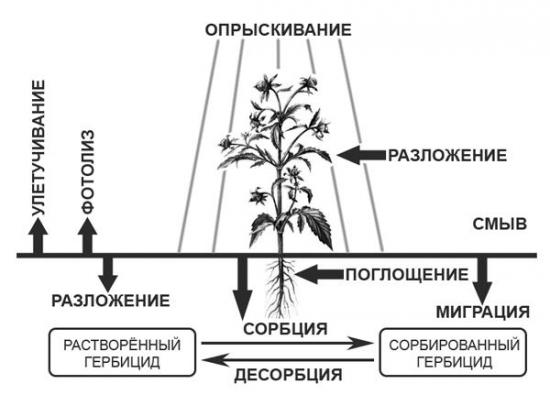

The agent, moving through the tissues, gets to young shoots, leaves, roots, internodes of cereals. Under its influence, the activity of the EPSPS enzyme is suppressed, which provokes the breakdown of chloroplasts, deterioration of photosynthesis, and respiratory processes.
For this reason, growth slows down, foliage turns yellow, and plants die. Within 3-4 hours, the first signs of the effect of this drug can be observed.
The weeds will die completely after 5-10 days. 30 days is the maximum period of exposure to the solution. The duration of the process is in direct proportion to the type of weeds and weather conditions.
How much money will be required to process the site
When processing areas with Roundup, it is important to take into account the instructions and general safety rules.
In addition, there are a number of basic parameters that must be considered before starting work:
- On a plot, the area of which does not exceed 200 square meters with a predominance of melons and potatoes, you will need 80 ml of the drug mixed with 10 liters of water;
- The destruction of weeds in garden and vineyards is carried out in the same form and the same dosage as for melons;
- Preventive measures to prevent the development of the weed problem foresee the use of 80 ml of herbicide diluted in a bucket of water.


It is important to remember that the use of Roundup on the eve of the harvest or on the eve of harvest is strictly prohibited. This can negatively affect the condition of the harvested crop.
conclusions
If you constantly and on time fight weeds, you will be able to achieve the ideal condition of the soil in your area, enable useful crops to develop correctly and remove excess plants in which diseases can develop and harm. Just don't think that there is some kind of miracle drug that will instantly rid you of the weeds. Such a result can be achieved only with your own work and the adoption of complex measures.
Chemistry is not a panacea, but only a useful adjuvant. So we reviewed the drug "Roundup" (reviews). Photos of beautiful gardens, completely devoid of weeds, will surely stimulate you to start vigorous activity to destroy them on your site!


Those who are especially concerned about the possibility of retaining some amount of the herbicide in fruits and vegetables should be advised to follow the instructions more closely. First, you only need to spray the weeds once. Secondly, do not allow the product to get on the leaves of cultivated plants. Thirdly, do not carry out processing just before the harvest. If you follow all these simple rules, nothing will threaten your health. Good luck in weed control!
Why - if not otherwise?
The active ingredient in Roundup is the isopropylamine salt of glyphosate (36% by weight; 360 g / kg).To facilitate its penetration into plant tissues, the surfactant polyoxyethyleneamine (POEA) is added in an amount of 18% (180 g / kg). The dangers of glyphosate for humans and the environment have already been written. In short: at present, the WHO has recognized the immediate carcinogenic effect of glyphosate and the long-term effect on the development of autism in children. "Instant carcinogenic" means that glyphosate, when applied to the skin, disrupts the epithelial cell genome; it is a harbinger of skin cancer. In addition, glyphosate is the main cause of the emergence of mutant weeds, the so-called. superweeds, especially malicious and resistant to herbicides.
The harmful effects of glyphosate are cumulative and systemic; actually global. This is due to the chelation of a small part of the used glyphosate of metal ions in the soil. Glyphosate chelates disintegrate very slowly and he, like a gene poison, manages to do a lot of mischief. Therefore, the use of Roundup is permissible only once in a given year, and until the next one at least 3-4 years must pass, so that all residual glyphosate breaks down into harmless phosphates, free nitrogen, carbon dioxide and water. On plots for fruit and vegetable crops, the use of Roundup is permissible only in the fall, see below.
Note: and remember - each use of Roundup on the site reduces the thickness of the fertile soil layer on it in the current year by 1-2 cm. It will take at least 3-4 years to restore it using improvised soil reclamation methods.
Roundup Max
One way to reduce the risk of glyphosate is to use Roundup Max instead of a simple Roundup. It is not at all safer, but it allows you to reduce the time of destruction of weeds, the dosage of the drug, and in the order of technical control (see below), in all cases, you can do with a single treatment.
Comparative characteristics of simple Roundup and Roundup Max see in the table:
| A drug | Complete absorption time (time before rain) | Permissible air temperature | Minimum permissible air humidity | Effective for perennial monocotyledonous, dicotyledonous and rhizome | Time of suitability of dead weeds tops for harvesting | Translaminar Activity (Migration Rate in a Plant) |
| Roundup (* - base reading value) | 6-24 hours | + (15-25) degrees Celsius | 70% | 67% compared to monocots | A week | 100%* |
| Roundup Max | 1 hour | + (2-30) degrees Celsius | 50% | 100% compared to monocots | 1 day for annuals, 3 days for perennials | 160% |
The crux of the matter is that the Roundup treatment can almost always be postponed until the fall. Chelation of metals with glyphosate is much more dependent on temperature than the rate of its decomposition in the soil, and next year the site will be suitable for fruit and vegetable crops.
From the point of view of the owner-owner, the essence of the matter is slightly different: at the cost of some manual labor, a new weed (fallow, virgin land) can be cultivated with the help of Roundup Max in a season. Also, during the season, it is possible to lime on the site especially harmful weeds that have filled it, for example. ragweed. In either case, in the period before harvesting, unseeded weeds are regularly weeded out (mowed again); tops can be used for compost, hay (cereal), fuel, etc. In autumn, depleted sprouts will succumb to the minimum doses of the drug and there will be no problems with burning the tops, because it is not subject to any economic use from plants treated with Roundup. After Roundup Max, using this technology, you can simply fill the remains in the ground (carry out an autumn digging or plowing).
Note: any Roundup is quite effective only for juvenile plants, i.e. actively vegetating and not ready to bloom. For wheatgrass and other weeds, this is a sprout with 3-4 true leaves that has not gone into the tube; for sow thistle, thistle, thistle, horse sorrel and burdock - the stage of the basal rosette without the rudiment of the flower arrow.
Processing safety
Despite the fact that Roudnap belongs to the substances of the third hazard class, it is strongly recommended not to forget about the rules of personal protection when using it.
The main points to keep in mind are:
- It is forbidden to prepare a solution for soil treatment in food utensils. For this purpose, any bucket or plastic canister will do. The material of the container does not matter, the product does not lose its effectiveness when interacting with plastic or metal;
- If during the preparation process the solution accidentally spills, you need to thoroughly wash the floor with plenty of water;
- Direct work must be done with gloves, closed clothing and protected head. By protecting yourself as much as possible from the danger of getting the product on the body, you can significantly reduce the danger of poisoning;
- After finishing work, you must take off your clothes and wash your face and hands thoroughly;
- If liquid gets into the eye, rinse immediately with running water, after washing your hands;
- In case of contact with the skin, immediately rinse the affected area with plenty of water;
- It is not recommended to smoke, drink or eat during work.


It is recommended to store the product out of the reach of animals and children, as far as possible from food and drugs.
After the drug is used, the packaging should be burned away from water bodies and residential buildings. If it is not possible to burn, the can must be tightly closed and thrown into a landfill.
It is important to remember that non-compliance with safety rules negatively affects, first of all, the condition of the worker. If even this does not help and the mixture gets on the skin, you need to wash it off as soon as possible.
Roundup benefits
Let's take a look at the benefits of this weed control agent:
- allows you to make a minimum number of treatments;
- kills weeds of various varieties - perennials, annuals, cereals;
- mint, wheatgrass and sorrel lend themselves well to its effects;
- quickly enough decomposes in the ground into harmless components. It is the safest herbicide. Has hazard class 3;
- does not affect the germination of seeds of cultivated plants;
- does not affect weeds through the soil;
- often used to dry crops before harvesting.
This improves the quality of the harvested crop. The reduced moisture content in them allows for improved storage conditions.

